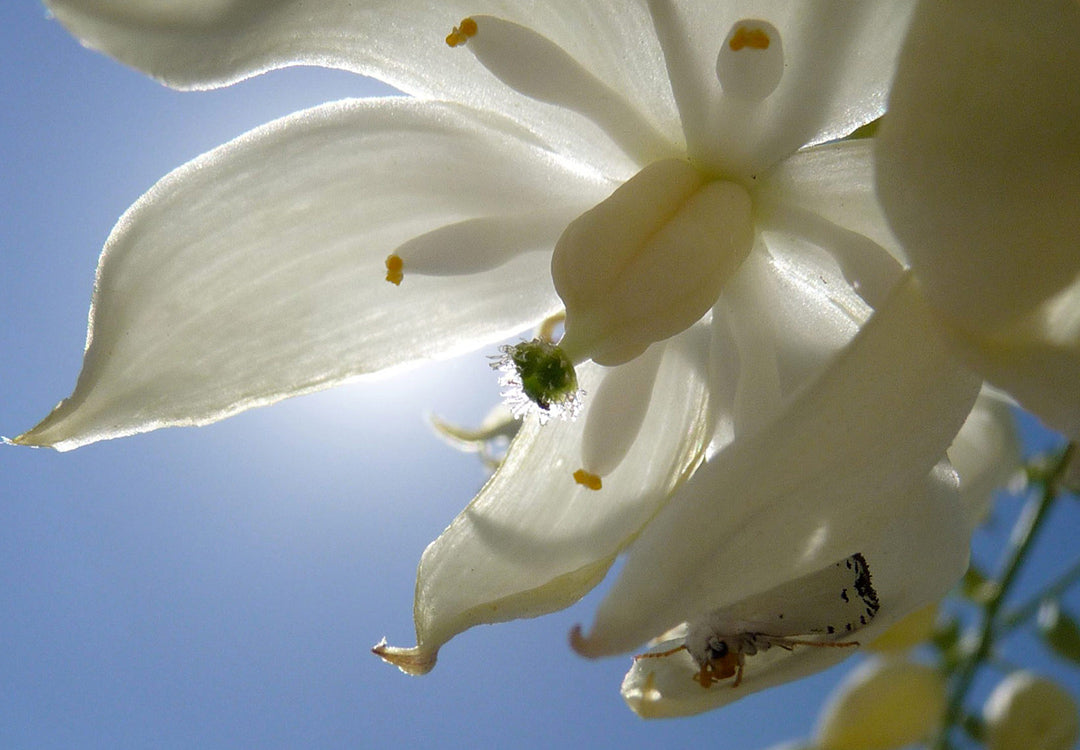
The asparagus family Asparagaceae was one of the monocotyledonous families that were split off from the lily family Liliaceae, along with other unrelated plants such as Amaryllis spp. and Agapanthus spp.
Description
Members of this family can differ quite a lot in appearance so it’s hard to give a single description for all plants; they tend to have tightly bunched nodes, internodes and leaves, but this is not a firm rule for the family.
Flowers, Fruits & Leaves
Tepals: Petals and sepals look alike, typically with 3 of each.
Male: Typically 6 stamina.
Female: 3-parted pistil.
Fruit: Fruits vary a lot, from the little purple berries of mondo grass to the dehiscent seed pods of agave.
Seeds: Varying.
Leaves: The parallel leaves can vary a lot. They might be scale-like bracts, succulent, or strappy.
Noteworthy Types
Plants in the Asparagus genus tend to resemble a fern, such as one of the ornamental plants known as asparagus fern, A. densiflorus. This genus also includes the succulent culinary asparagus, which are the tender spring stalks of A. officinalis.

Asparagus fern Asparagus densiflorus in a pot. Image source

Asparagus officinalis shoots with scale-like bracts as leaves. Image source
The agave subfamily Agavoideae includes a number of plants that we will likely recognise, including plants in the Agave and Yucca genera. They are not closely related to other succulents like aloe vera, sempervivum or cacti.

Agave attenuata is a plant native to Mexico that’s extensively planted in Australian gardens due to its ability to make the best of any small amounts of water in drought conditions. Image source

Yucca gloriosa in full bloom. Image source

Yucca sp. flower with 6 tepals, 6 stamens and a single pistil. See the moth hiding, which is probably a pollinator for the plant as they have a symbiotic relationship with certain types of moth. Image source
There are a few Aussie natives within the lomandra subfamily Lomandroideae, including plants in the Lomandra and Cordyline genera that are widely used in Aussie gardens.

Aussie native Cordyline australis can look quite similar to a yucca. One way to tell them apart is that cordylines tend to have floppier leaves, whereas yuccas have stiff leaves. Image source

Close up of a Lomandra hystrix inflorescence. Image source
Mondo grasses are in a genus called Ophiopogon and are in the subfamily Nolinoideae, along with members of the Dracaena plant.

A mondo grass Ophiopogon japonicus with fruits. Image source

Rainbow tree Dracaena reflexa with red variegation on the leaves. Image source
Xanthorrhoea is a native genus of “grass trees” within the asparagus family that resemble another Australian unrelated species, Kingia australis.

Xanthorrhoea australis grass trees can get quite a bit larger than this. They can be identified by their flower spike. Image source
Conclusion
This family is a relatively recently classified family because the groupings don’t necessarily intuitively make as much sense as other families with clearer similarities such as true grasses, orchids, legumes or mints.
If you haven’t already read my articles on plant identification and scientific names, I recommend reading those to get a broader picture of the topic. Alternatively, you can browse some of my other plant families, subfamilies and genera below.
